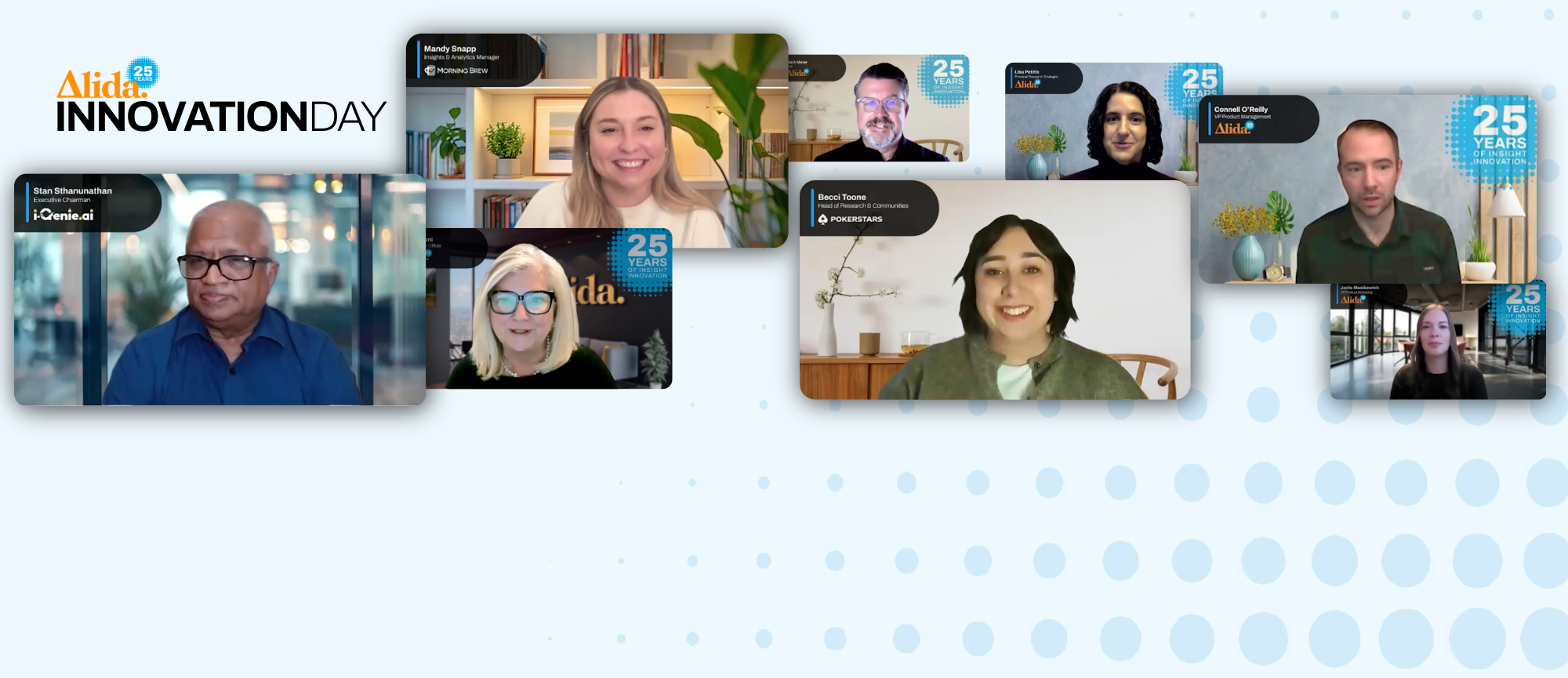At a spotlight Activate 2025 panel, industry experts delved into the world of mixed method research. The conversation explored the powerful synergy of qualitative (qual) and quantitative (quant) methods, offering tips on how to unlock these approaches to deepen consumer understanding.
Integrating qual and quant research can lead to breakthroughs that wouldn't have been possible with a single method approach. As our panelists discussed, their mixed method approach is helping to uncover key business-driving impact:
-
As Kim Cooper, VP Market Research & Competitive Intelligence at EverBank mentioned, they leverage a combination of qualitative customer feedback and quantitative campaign testing to identify new markets and refine their segmentation strategy. She emphasized a continuous cycle of gathering feedback by testing marketing campaigns with quantitative data (like response rates and A/B testing), and then diving deeper with qual to optimize and anticipate future trends.
-
Kristin Arnold, Sr. Director, UX Research at Google, discussed their "Focus Metrics" initiative. By blending qualitative deep dives, longitudinal sentiment tracking, and engineer behavioral logs, her team gained a holistic view of developer experience. Their research showed that simply working more doesn't equate to more output, but rather facilitating focused experiences drove developer workflow.
-
Inna Tsirlin, Former Sr. Staff UX Researcher & Manager, recounted a pivotal "Aha! moment" from her early career at Google Ads. Despite extensive quantitative log analysis, her team couldn't understand why a large number of users were reverting to a previous version of the product. A simple, open-ended question asking "Why did you switch?" revealed critical qualitative insights, such as the new color scheme causing eye fatigue for users who spent long hours on the interface. Inna stated, "From then on, my mantra is always include an open-ended question to follow up a metric, because that's what makes the metric actionable. It gives you the "why."
Essential Skills and Resources for Mixed-Method Success
During the panel, experts uncovered the crucial elements for building successful mixed-method research programs. The panelists emphasized three key aspects:
- Lean on expertise: Encourage your team or organization to develop expertise in both qualitative and quantitative methodologies, or foster strong collaborations between researchers with different specializations. Kim Cooper highlighted that as a “team of one” she relies heavily on external partners like Alida for survey programming, design, and analysis, allowing her to focus on opportunities to support stakeholders with data and next steps.
- Availability of tools: Especially for quantitative research, access to in-product surveys, proper log instrumentation, and easy data access are vital.
- Fostering collaborations: Actively encouraging qualitative and quantitative researchers to work together on projects leads to fruitful results and amplifies insights and impact. Javier Bargas added that when “quants” and “qualls” collaborate, "the magic happens and you can find how you can help each other and make each other’s research better".
- Strategic Integration, Not Just Collection: True mixed methods research involves thoughtful integration at various stages—from design and data collection to analysis and interpretation. It's about designing studies where the qualitative and quantitative components inform and build upon each other.
Communicating Mixed-Method Findings Effectively
Communicating complex mixed-method results to diverse stakeholders requires a tailored approach. Kim shared that EverBank holds monthly "knowledge share" forums with marketing, senior leadership, and other business partners to highlight new insights and sparking further research. They also maintain a research repository containing both in-depth statistical analyses and "one-sheeter" summaries with key insights, takeaways, and recommendations, catering to different levels of research literacy.
Inna Tsirlin echoed this, advising to "hide the gory details" and present insights in relatable, understandable terms as part of a coherent narrative. She suggested combining a quantitative statistic (e.g., "50% of users drop off on the second page") with qualitative explanations and a "juicy quote from a user" to make the findings memorable and actionable.
Navigating Pitfalls in Mixed-Method Research
Access and data transparency can be a roadblock to mixed method success. Kristin Arnold highlighted the need for quantitative researchers to be "set up for success" with proper tooling and access to data, preventing them from spending valuable time "begging software engineers to help them to be able to do their job". She advocated for engineering and UX teams to embed accountability to foster cross-functional magic.
Another pitfall is the desire from stakeholders for immediate results, even if qualitative follow-up is needed. Iterative reporting strategies can help manage expectations and ensure all insights are integrated before sharing.
Inna also pointed out a common challenge: when quantitative and qualitative data don't align. In such cases, she recommends revisiting the drawing board to review questions asked, methods used, and to explore if there's an unexamined third factor at play. She explained, "Sometimes, I've seen some breakthroughs come from just going back to the drawing board and saying, 'Okay, why aren't these aligning? Did we ask the questions differently? Did we do something differently in our method?'"
To uncover rich and sometimes unexpected insights, integrating qualitative and quantitative research into a unified program is essential. By embracing diverse methodologies, fostering collaboration, and strategically communicating findings, research teams can unlock deeper understanding and propel product development forward faster.






